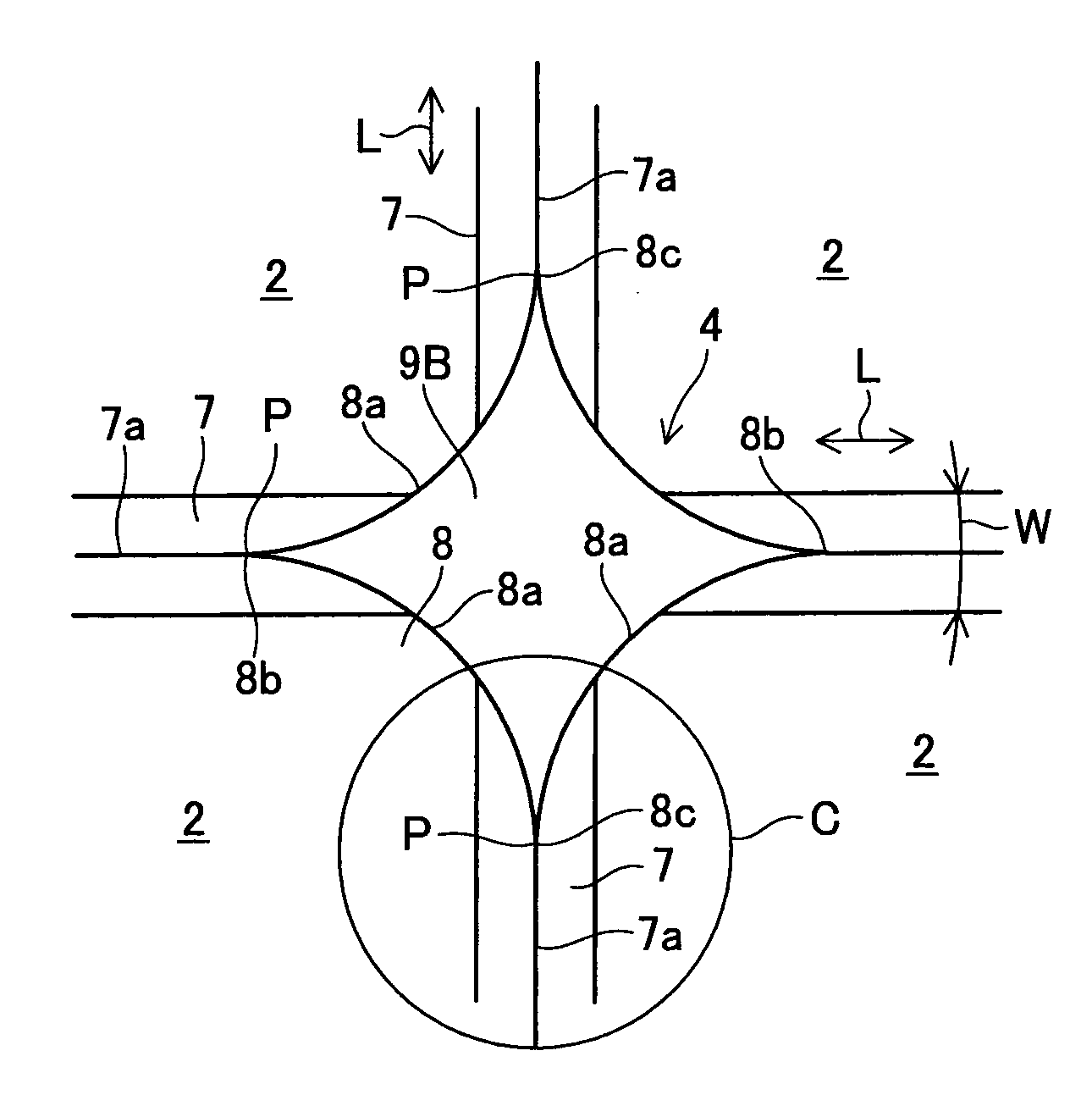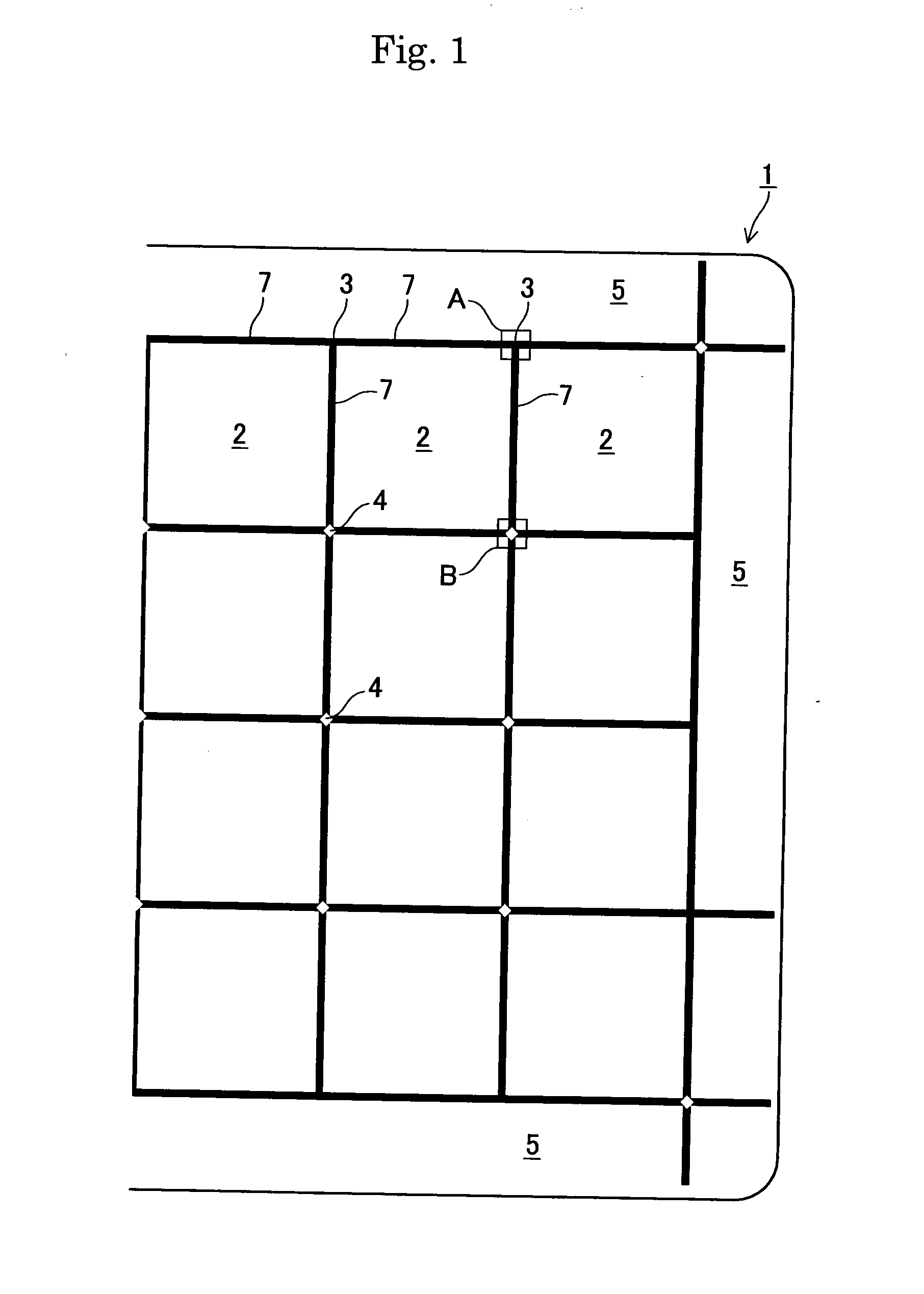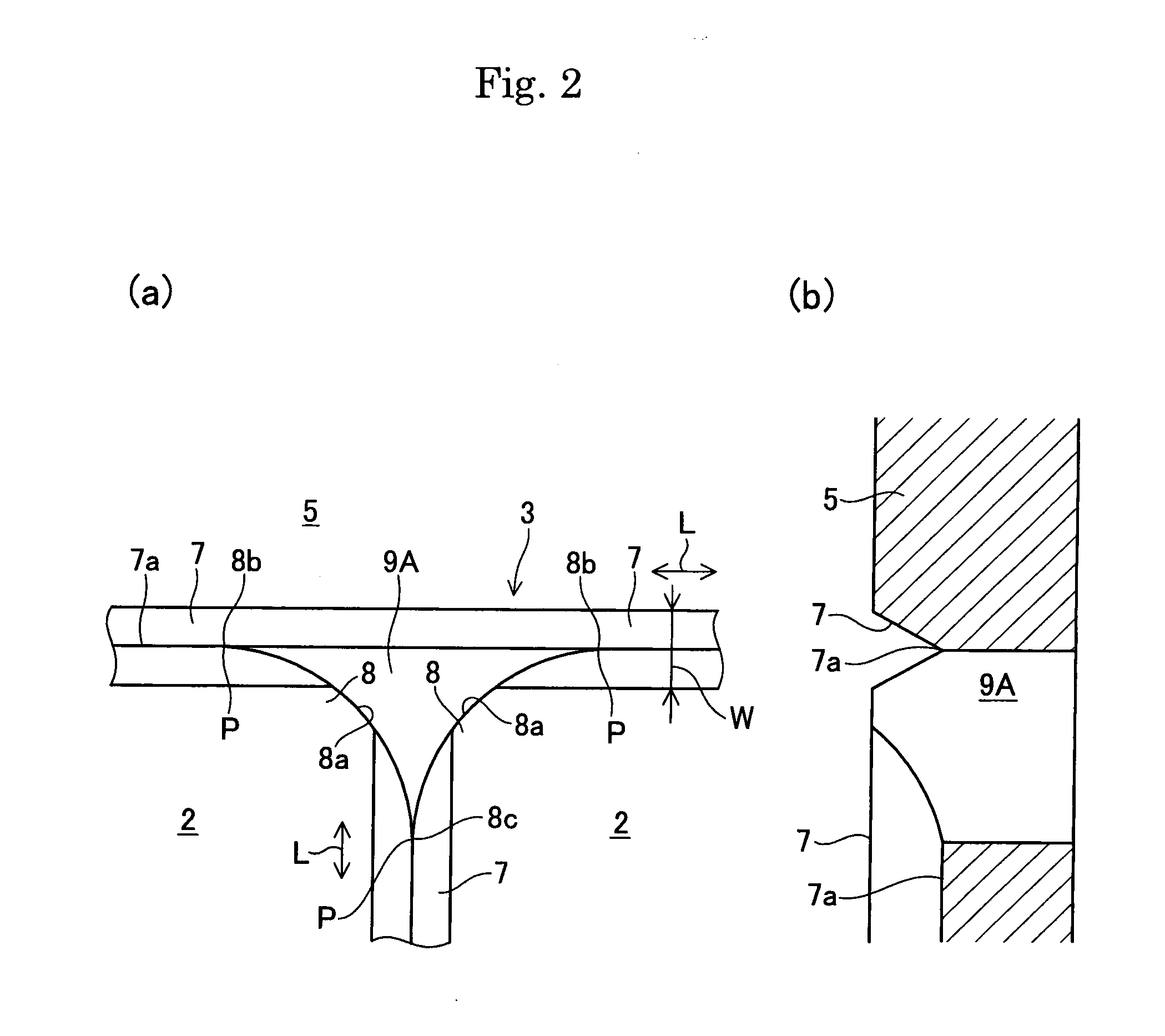Method of producing ceramic substrates
- Summary
- Abstract
- Description
- Claims
- Application Information
AI Technical Summary
Benefits of technology
Problems solved by technology
Method used
Image
Examples
example 1
[0047]A base plate 1 made of a translucent alumina ceramics was produced as follows. That is, 100 weight parts of alumina powder and 0.025 weight parts of magnesia as powdery raw materials, 30 weight parts of a polybasic acid ester as a dispersant, 4 weight parts of MDI resin as a gelling agent, 2 weight parts of “MALIALIM AKM0351” (trade name, supplied by NOF corporation) as a dispersant, and 0.2 weight parts of triethylamine as a catalyst were mixed to obtain slurry. The slurry was then casted at room temperature into a mold made of an aluminum alloy which has protrusions each having an inverted shape of a dividing groove, maintained at room temperature for 1 hour, and removed from the mold after the solidification. Further, the molded body was maintained at room temperature for 2 hours and then at 90° C. for 2 hours to obtain a dried molded body of powder having a shape of a base plate. It was then calcined at 1200° C. in air to obtain a calcined body. The calcined body was then ...
examples 2 and 3
[0061]Test was performed according to the same procedure as the Example 1 except that the width of the opening and angle of the bottom of the groove were changed as shown in Table 1, and the results were shown in Table 1.
TABLE 1ComparativeComparativeExample 1Example 2Example 3Example 1Example 2Width of opening 0.3 mm 0.1 mm 0.5 mm 0.3 mm 0.3 mmat surface: mmAngle at bottom of60°25°90°60°60°groove: °Depth of groove: mm0.26 mm0.26 mm0.26 mm0.26 mm0.26 mmShape of spacingTangentialTangentialTangentialCircleCurvedArcArcArcArcForce required0.6 ± 0.10.6 ± 0.10.6 ± 0.10.6 ± 0.30.7 ± 0.3for breaking: N / mm2Shift from0 / 100 / 100 / 103 / 108 / 10dividing groove
PUM
| Property | Measurement | Unit |
|---|---|---|
| Angle | aaaaa | aaaaa |
| Width | aaaaa | aaaaa |
| Digital information | aaaaa | aaaaa |
Abstract
Description
Claims
Application Information
 Login to View More
Login to View More - R&D Engineer
- R&D Manager
- IP Professional
- Industry Leading Data Capabilities
- Powerful AI technology
- Patent DNA Extraction
Browse by: Latest US Patents, China's latest patents, Technical Efficacy Thesaurus, Application Domain, Technology Topic, Popular Technical Reports.
© 2024 PatSnap. All rights reserved.Legal|Privacy policy|Modern Slavery Act Transparency Statement|Sitemap|About US| Contact US: help@patsnap.com










